
home-llm
A Home Assistant integration & Model to control your smart home using a Local LLM
Stars: 603
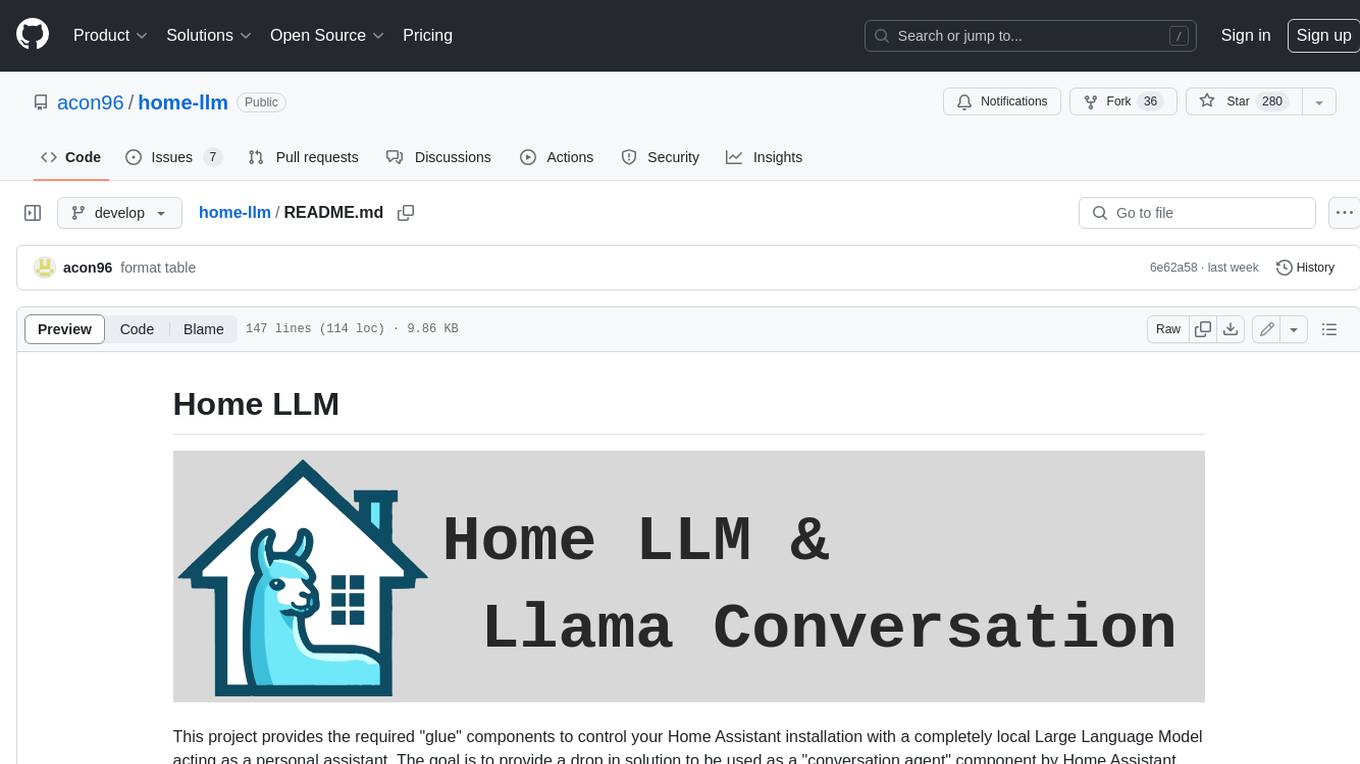
Home LLM is a project that provides the necessary components to control your Home Assistant installation with a completely local Large Language Model acting as a personal assistant. The goal is to provide a drop-in solution to be used as a "conversation agent" component by Home Assistant. The 2 main pieces of this solution are Home LLM and Llama Conversation. Home LLM is a fine-tuning of the Phi model series from Microsoft and the StableLM model series from StabilityAI. The model is able to control devices in the user's house as well as perform basic question and answering. The fine-tuning dataset is a custom synthetic dataset designed to teach the model function calling based on the device information in the context. Llama Conversation is a custom component that exposes the locally running LLM as a "conversation agent" in Home Assistant. This component can be interacted with in a few ways: using a chat interface, integrating with Speech-to-Text and Text-to-Speech addons, or running the oobabooga/text-generation-webui project to provide access to the LLM via an API interface.
README:
This project provides the required "glue" components to control your Home Assistant installation with a completely local Large Language Model acting as a personal assistant. The goal is to provide a drop in solution to be used as a "conversation agent" component by Home Assistant. The 2 main pieces of this solution are the Home LLM model and Local LLM Conversation integration.
Please see the Setup Guide for more information on installation.
The latest version of this integration requires Home Assistant 2024.8.0 or newer
In order to integrate with Home Assistant, we provide a custom component that exposes the locally running LLM as a "conversation agent".
This component can be interacted with in a few ways:
- using a chat interface so you can chat with it.
- integrating with Speech-to-Text and Text-to-Speech addons so you can just speak to it.
The integration can either run the model in 2 different ways:
- Directly as part of the Home Assistant software using llama-cpp-python
- On a separate machine using one of the following backends:
- Ollama (easier)
- LocalAI via the Generic OpenAI backend (easier)
- oobabooga/text-generation-webui project (advanced)
- llama.cpp example server (advanced)
The "Home" models are a fine tuning of various Large Languages Models that are under 5B parameters. The models are able to control devices in the user's house as well as perform basic question and answering. The fine tuning dataset is a custom synthetic dataset designed to teach the model function calling based on the device information in the context.
The latest models can be found on HuggingFace:
3B v3 (Based on StableLM-Zephyr-3B): https://huggingface.co/acon96/Home-3B-v3-GGUF (Zephyr prompt format)
1B v3 (Based on TinyLlama-1.1B): https://huggingface.co/acon96/Home-1B-v3-GGUF (Zephyr prompt format)
Non English experiments:
German, French, & Spanish (3B): https://huggingface.co/acon96/stablehome-multilingual-experimental
Polish (1B): https://huggingface.co/acon96/tinyhome-polish-experimental
Old Models
3B v2 (Based on Phi-2): https://huggingface.co/acon96/Home-3B-v2-GGUF (ChatML prompt format)
1B v2 (Based on Phi-1.5): https://huggingface.co/acon96/Home-1B-v2-GGUF (ChatML prompt format)
1B v1 (Based on Phi-1.5): https://huggingface.co/acon96/Home-1B-v1-GGUF (ChatML prompt format)
NOTE: The models below are only compatible with version 0.2.17 and older! 3B v1 (Based on Phi-2): https://huggingface.co/acon96/Home-3B-v1-GGUF (ChatML prompt format)
The model is quantized using Llama.cpp in order to enable running the model in super low resource environments that are common with Home Assistant installations such as Raspberry Pis.
The model can be used as an "instruct" type model using the ChatML or Zephyr prompt format (depends on the model). The system prompt is used to provide information about the state of the Home Assistant installation including available devices and callable services.
Example "system" prompt:
You are 'Al', a helpful AI Assistant that controls the devices in a house. Complete the following task as instructed with the information provided only.
The current time and date is 08:12 AM on Thursday March 14, 2024
Services: light.turn_off(), light.turn_on(brightness,rgb_color), fan.turn_on(), fan.turn_off()
Devices:
light.office 'Office Light' = on;80%
fan.office 'Office fan' = off
light.kitchen 'Kitchen Light' = on;80%;red
light.bedroom 'Bedroom Light' = off
For more about how the model is prompted see Model Prompting
Output from the model will consist of a response that should be relayed back to the user, along with an optional code block that will invoke different Home Assistant "services". The output format from the model for function calling is as follows:
turning on the kitchen lights for you now
```homeassistant
{ "service": "light.turn_on", "target_device": "light.kitchen" }
```
Due to the mix of data used during fine tuning, the 3B model is also capable of basic instruct and QA tasks. For example, the model is able to perform basic logic tasks such as the following (Zephyr prompt format shown):
<|system|>You are 'Al', a helpful AI Assistant that controls the devices in a house. Complete the following task as instructed with the information provided only.
*snip*
<|endoftext|>
<|user|>
if mary is 7 years old, and I am 3 years older than her. how old am I?<|endoftext|>
<|assistant|>
If Mary is 7 years old, then you are 10 years old (7+3=10).<|endoftext|>
The synthetic dataset is aimed at covering basic day to day operations in home assistant such as turning devices on and off. The supported entity types are: light, fan, cover, lock, media_player, climate, switch
The dataset is available on HuggingFace: https://huggingface.co/datasets/acon96/Home-Assistant-Requests
The source for the dataset is in the data of this repository.
If you want to prepare your own training environment, see the details on how to do it in the Training Guide document.
Training Details
The 3B model was trained as a full fine-tuning on 2x RTX 4090 (48GB). Training time took approximately 28 hours. It was trained on the --large dataset variant.
accelerate launch --config_file fsdp_config.yaml train.py \
--run_name home-3b \
--base_model stabilityai/stablelm-zephyr-3b \
--bf16 \
--train_dataset data/home_assistant_train.jsonl \
--learning_rate 1e-5 \
--batch_size 64 \
--epochs 1 \
--micro_batch_size 2 \
--gradient_checkpointing \
--group_by_length \
--ctx_size 2048 \
--save_steps 50 \
--save_total_limit 10 \
--eval_steps 100 \
--logging_steps 2The 1B model was trained as a full fine-tuning on an RTX 3090 (24GB). Training took approximately 2 hours. It was trained on the --medium dataset variant.
python3 train.py \
--run_name home-1b \
--base_model TinyLlama/TinyLlama-1.1B-Chat-v1.0 \
--bf16 \
--train_dataset data/home_assistant_train.jsonl \
--test_dataset data/home_assistant_test.jsonl \
--learning_rate 2e-5 \
--batch_size 32 \
--micro_batch_size 8 \
--gradient_checkpointing \
--group_by_length \
--ctx_size 2048 \
--save_steps 100 \
--save_total_limit 10
--prefix_ids 29966,29989,465,22137,29989,29958,13 \
--suffix_ids 2In order to facilitate running the project entirely on the system where Home Assistant is installed, there is an experimental Home Assistant Add-on that runs the oobabooga/text-generation-webui to connect to using the "remote" backend options. The addon can be found in the addon/ directory.
| Version | Description |
|---|---|
| v0.3.6 | Small llama.cpp backend fixes |
| v0.3.5 | Fix for llama.cpp backend installation, Fix for Home LLM v1-3 API parameters, add Polish ICL examples |
| v0.3.4 | Significantly improved language support including full Polish translation, Update bundled llama-cpp-python to support new models, various bug fixes |
| v0.3.3 | Improvements to the Generic OpenAI Backend, improved area handling, fix issue using RGB colors, remove EOS token from responses, replace requests dependency with aiohttp included with Home Assistant |
| v0.3.2 | Fix for exposed script entities causing errors, fix missing GBNF error, trim whitespace from model output |
| v0.3.1 | Adds basic area support in prompting, Fix for broken requirements, fix for issue with formatted tools, fix custom API not registering on startup properly |
| v0.3 | Adds support for Home Assistant LLM APIs, improved model prompting and tool formatting options, and automatic detection of GGUF quantization levels on HuggingFace |
| v0.2.17 | Disable native llama.cpp wheel optimizations, add Command R prompt format |
| v0.2.16 | Fix for missing huggingface_hub package preventing startup |
| v0.2.15 | Fix startup error when using llama.cpp backend and add flash attention to llama.cpp backend |
| v0.2.14 | Fix llama.cpp wheels + AVX detection |
| v0.2.13 | Add support for Llama 3, build llama.cpp wheels that are compatible with non-AVX systems, fix an error with exposing script entities, fix multiple small Ollama backend issues, and add basic multi-language support |
| v0.2.12 | Fix cover ICL examples, allow setting number of ICL examples, add min P and typical P sampler options, recommend models during setup, add JSON mode for Ollama backend, fix missing default options |
| v0.2.11 | Add prompt caching, expose llama.cpp runtime settings, build llama-cpp-python wheels using GitHub actions, and install wheels directly from GitHub |
| v0.2.10 | Allow configuring the model parameters during initial setup, attempt to auto-detect defaults for recommended models, Fix to allow lights to be set to max brightness |
| v0.2.9 | Fix HuggingFace Download, Fix llama.cpp wheel installation, Fix light color changing, Add in-context-learning support |
| v0.2.8 | Fix ollama model names with colons |
| v0.2.7 | Publish model v3, Multiple Ollama backend improvements, Updates for HA 2024.02, support for voice assistant aliases |
| v0.2.6 | Bug fixes, add options for limiting chat history, HTTPS endpoint support, added zephyr prompt format. |
| v0.2.5 | Fix Ollama max tokens parameter, fix GGUF download from Hugging Face, update included llama-cpp-python to 0.2.32, and add parameters to function calling for dataset + component, & model update |
| v0.2.4 | Fix API key auth on model load for text-generation-webui, and add support for Ollama API backend |
| v0.2.3 | Fix API key auth, Support chat completion endpoint, and refactor to make it easier to add more remote backends |
| v0.2.2 | Fix options window after upgrade, fix training script for new Phi model format, and release new models |
| v0.2.1 | Properly expose generation parameters for each backend, handle config entry updates without reloading, support remote backends with an API key |
| v0.2 | Bug fixes, support more backends, support for climate + switch devices, JSON style function calling with parameters, GBNF grammars |
| v0.1 | Initial Release |
For Tasks:
Click tags to check more tools for each tasksFor Jobs:
Alternative AI tools for home-llm
Similar Open Source Tools

home-llm
Home LLM is a project that provides the necessary components to control your Home Assistant installation with a completely local Large Language Model acting as a personal assistant. The goal is to provide a drop-in solution to be used as a "conversation agent" component by Home Assistant. The 2 main pieces of this solution are Home LLM and Llama Conversation. Home LLM is a fine-tuning of the Phi model series from Microsoft and the StableLM model series from StabilityAI. The model is able to control devices in the user's house as well as perform basic question and answering. The fine-tuning dataset is a custom synthetic dataset designed to teach the model function calling based on the device information in the context. Llama Conversation is a custom component that exposes the locally running LLM as a "conversation agent" in Home Assistant. This component can be interacted with in a few ways: using a chat interface, integrating with Speech-to-Text and Text-to-Speech addons, or running the oobabooga/text-generation-webui project to provide access to the LLM via an API interface.
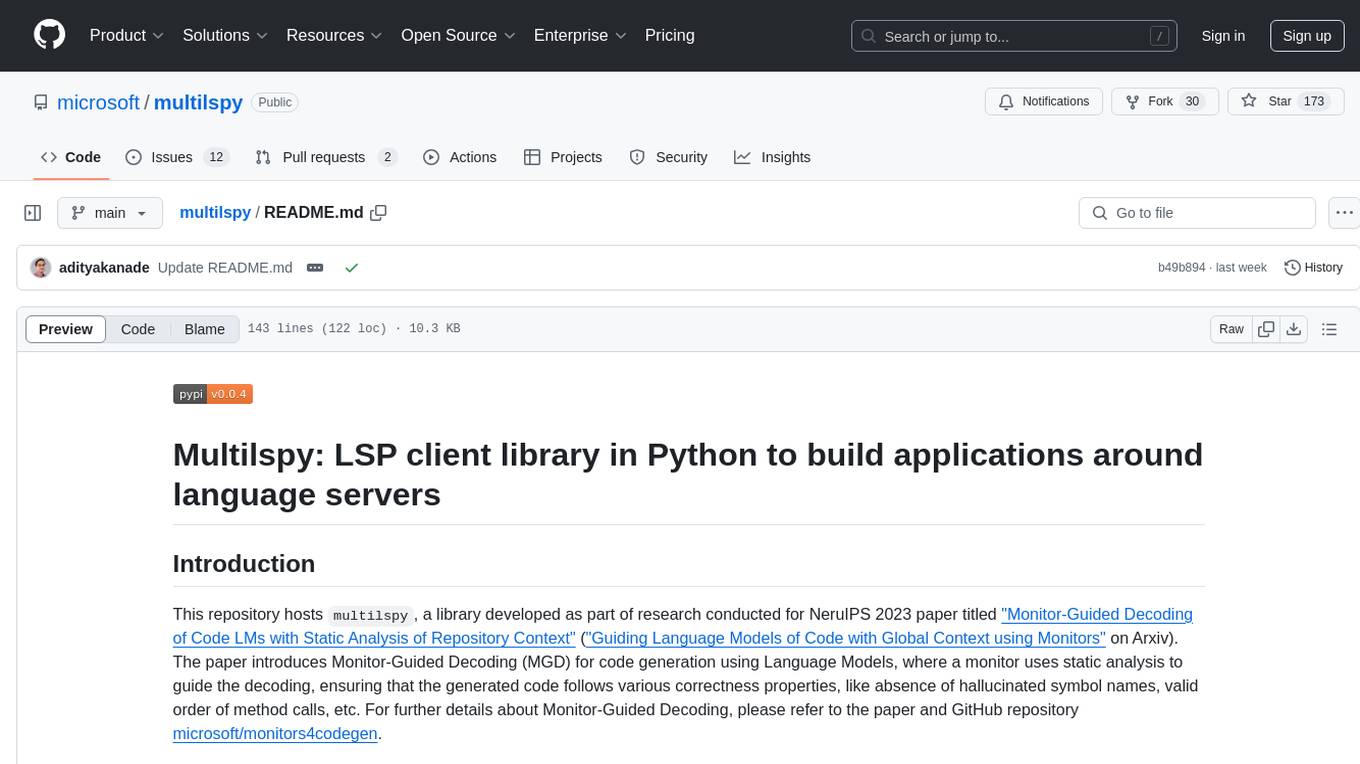
multilspy
Multilspy is a Python library developed for research purposes to facilitate the creation of language server clients for querying and obtaining results of static analyses from various language servers. It simplifies the process by handling server setup, communication, and configuration parameters, providing a common interface for different languages. The library supports features like finding function/class definitions, callers, completions, hover information, and document symbols. It is designed to work with AI systems like Large Language Models (LLMs) for tasks such as Monitor-Guided Decoding to ensure code generation correctness and boost compilability.
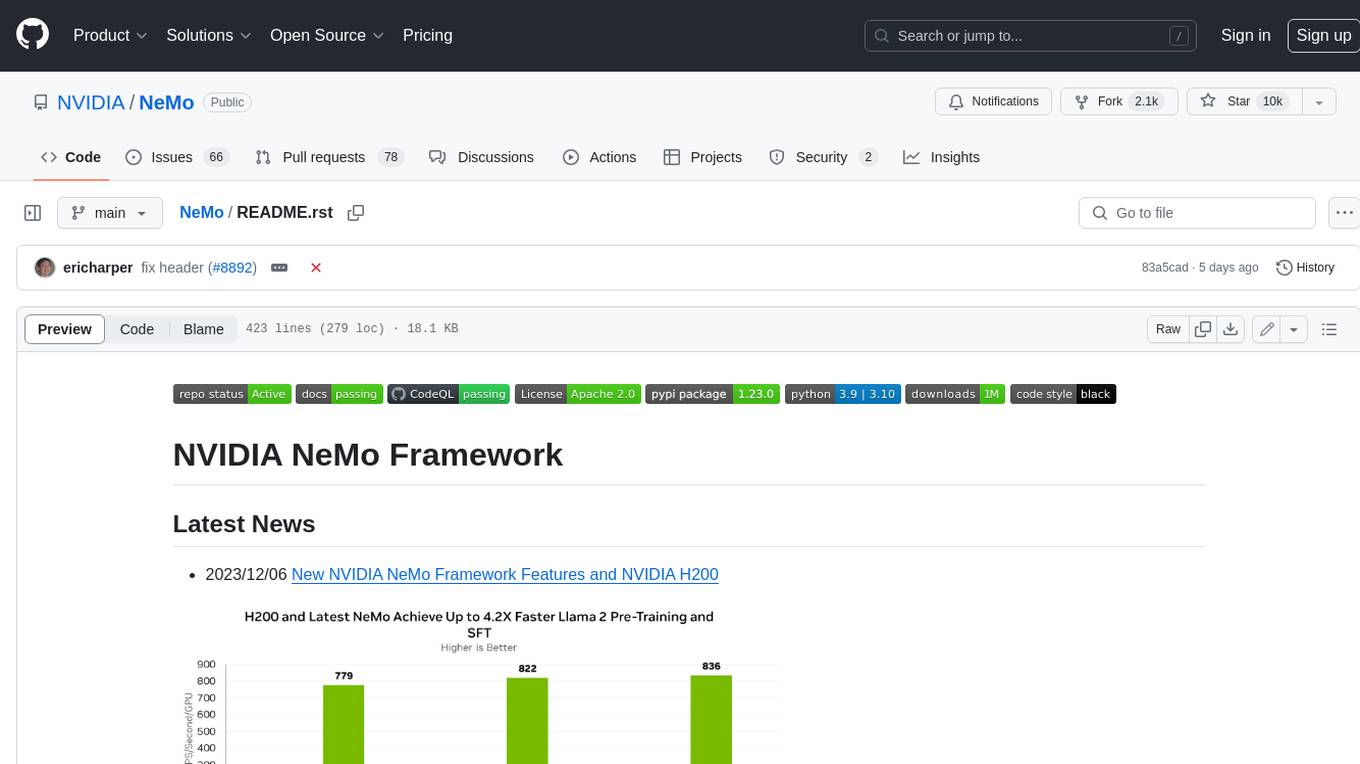
NeMo
NeMo Framework is a generative AI framework built for researchers and pytorch developers working on large language models (LLMs), multimodal models (MM), automatic speech recognition (ASR), and text-to-speech synthesis (TTS). The primary objective of NeMo is to provide a scalable framework for researchers and developers from industry and academia to more easily implement and design new generative AI models by being able to leverage existing code and pretrained models.
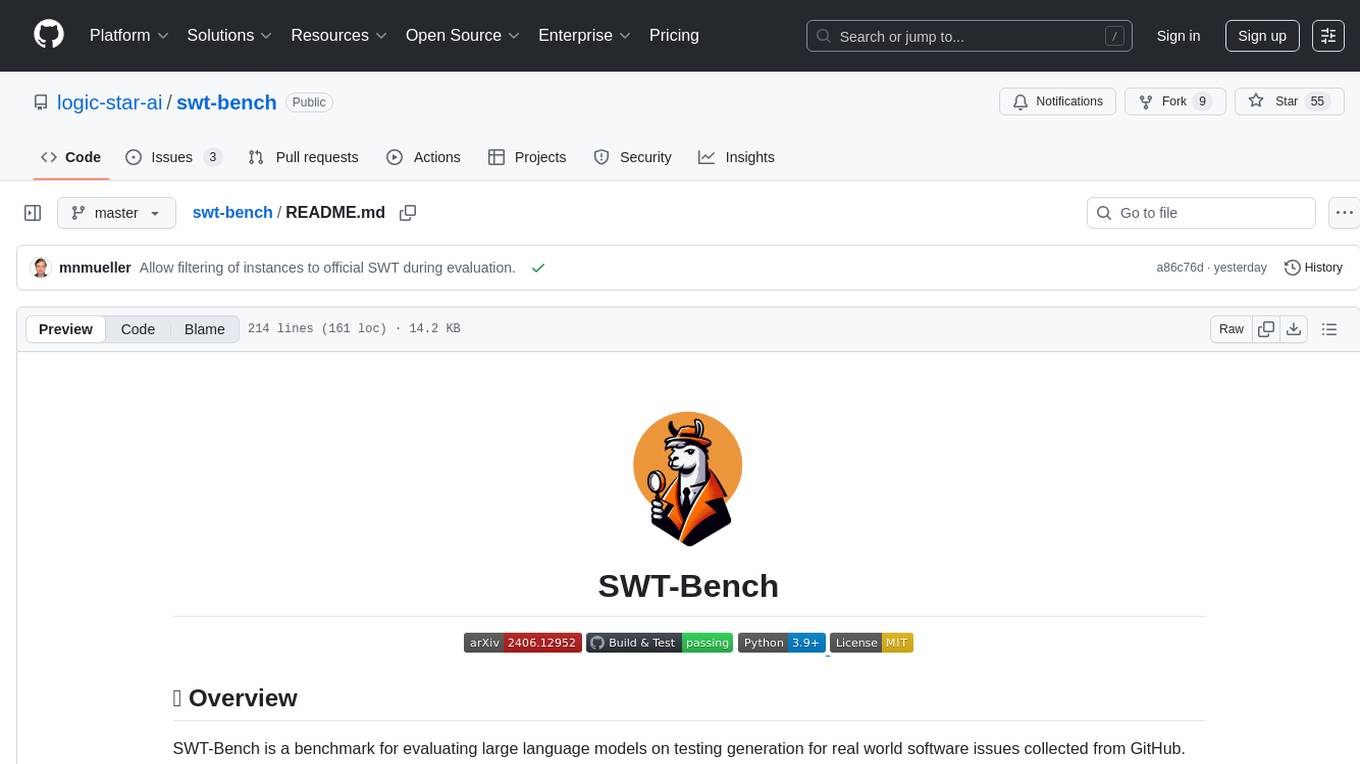
swt-bench
SWT-Bench is a benchmark tool for evaluating large language models on testing generation for real world software issues collected from GitHub. It tasks a language model with generating a reproducing test that fails in the original state of the code base and passes after a patch resolving the issue has been applied. The tool operates in unit test mode or reproduction script mode to assess model predictions and success rates. Users can run evaluations on SWT-Bench Lite using the evaluation harness with specific commands. The tool provides instructions for setting up and building SWT-Bench, as well as guidelines for contributing to the project. It also offers datasets and evaluation results for public access and provides a citation for referencing the work.
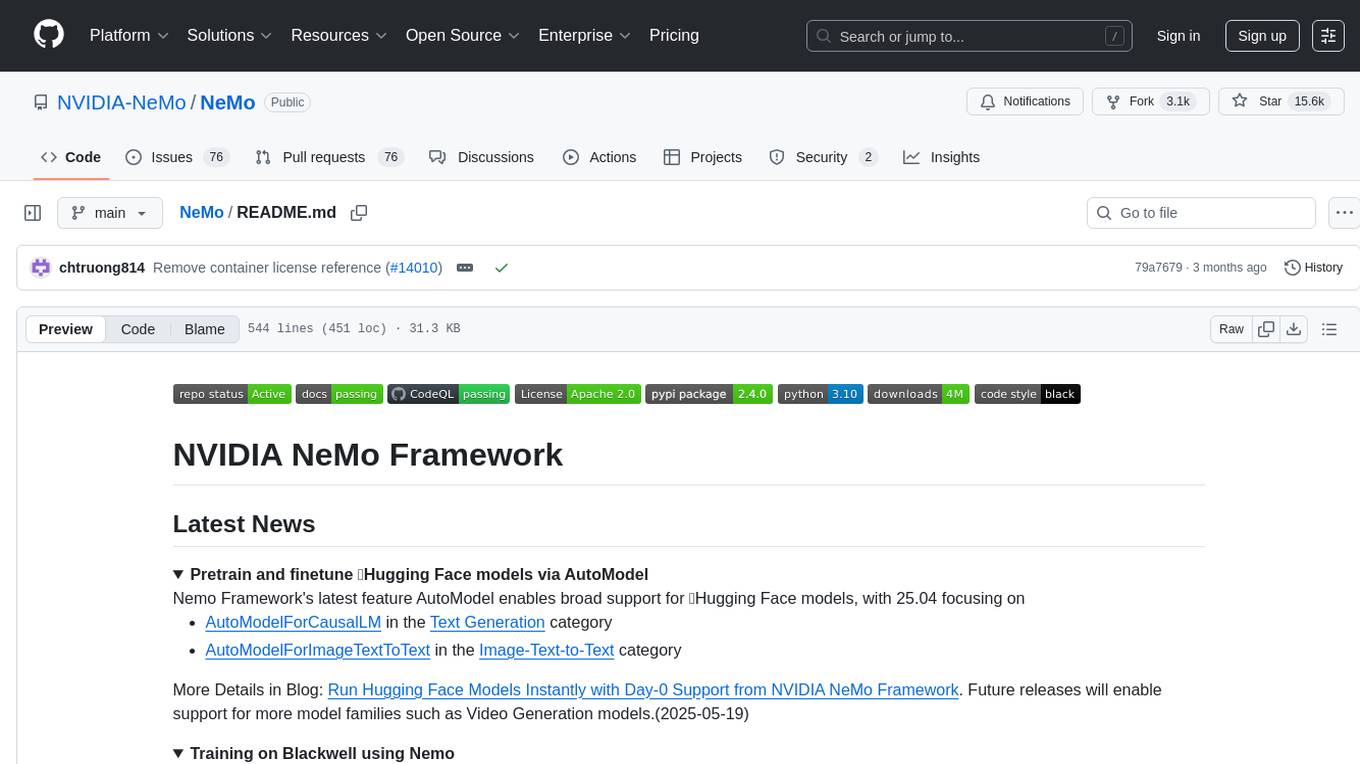
NeMo
NVIDIA NeMo Framework is a scalable and cloud-native generative AI framework built for researchers and PyTorch developers working on Large Language Models (LLMs), Multimodal Models (MMs), Automatic Speech Recognition (ASR), Text to Speech (TTS), and Computer Vision (CV) domains. It is designed to help you efficiently create, customize, and deploy new generative AI models by leveraging existing code and pre-trained model checkpoints.
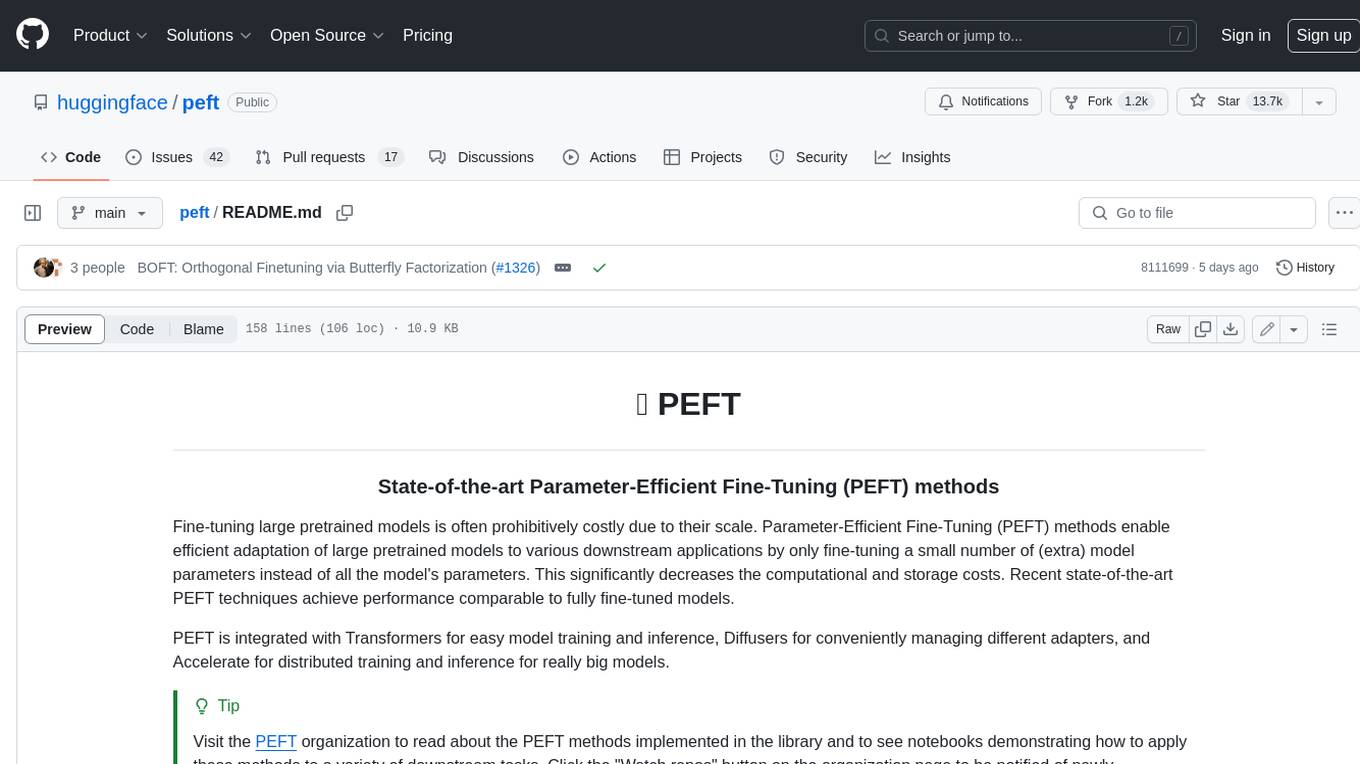
peft
PEFT (Parameter-Efficient Fine-Tuning) is a collection of state-of-the-art methods that enable efficient adaptation of large pretrained models to various downstream applications. By only fine-tuning a small number of extra model parameters instead of all the model's parameters, PEFT significantly decreases the computational and storage costs while achieving performance comparable to fully fine-tuned models.
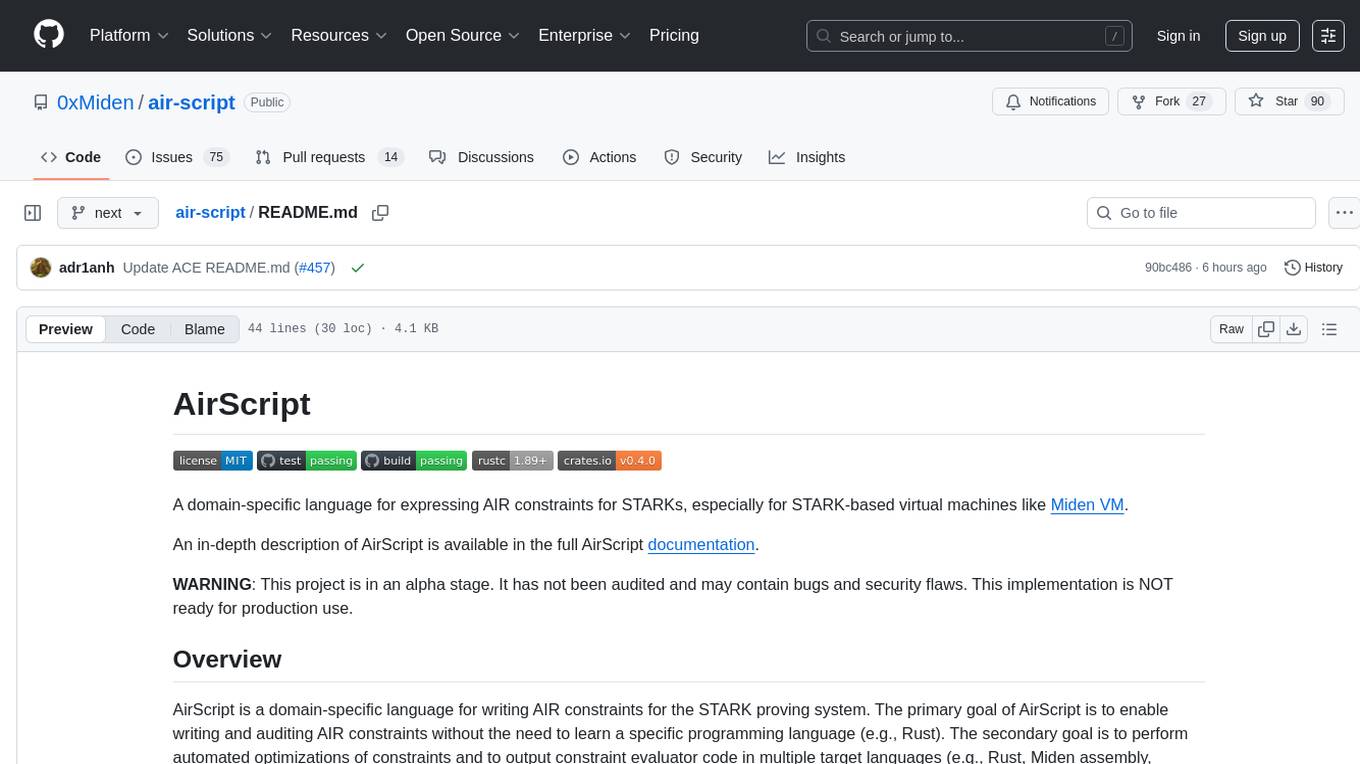
air-script
AirScript is a domain-specific language for expressing AIR constraints for STARKs, with the goal of enabling writing and auditing constraints without the need to learn a specific programming language. It also aims to perform automated optimizations and output constraint evaluator code in multiple target languages. The project is organized into several crates including Parser, MIR, AIR, Winterfell code generator, ACE code generator, and AirScript CLI for transpiling AIRs to target languages.
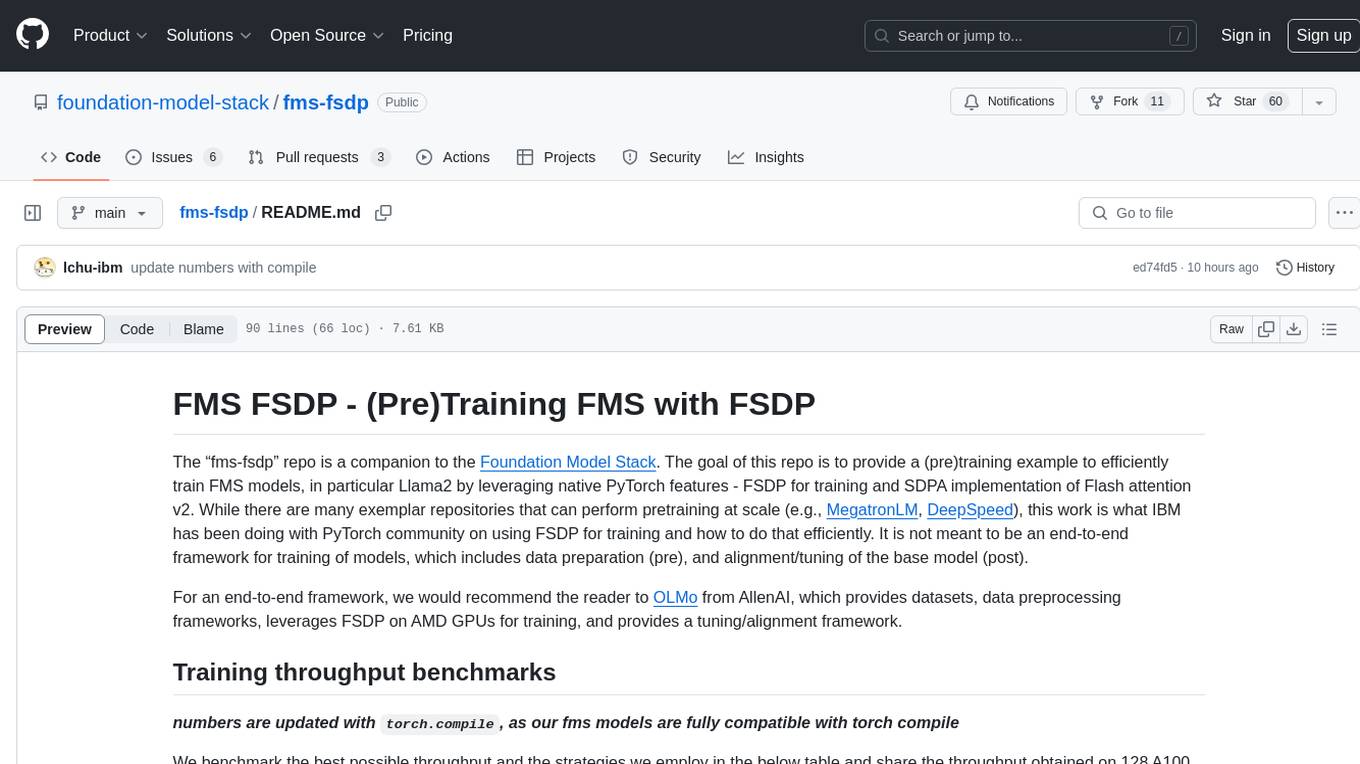
fms-fsdp
The 'fms-fsdp' repository is a companion to the Foundation Model Stack, providing a (pre)training example to efficiently train FMS models, specifically Llama2, using native PyTorch features like FSDP for training and SDPA implementation of Flash attention v2. It focuses on leveraging FSDP for training efficiently, not as an end-to-end framework. The repo benchmarks training throughput on different GPUs, shares strategies, and provides installation and training instructions. It trained a model on IBM curated data achieving high efficiency and performance metrics.
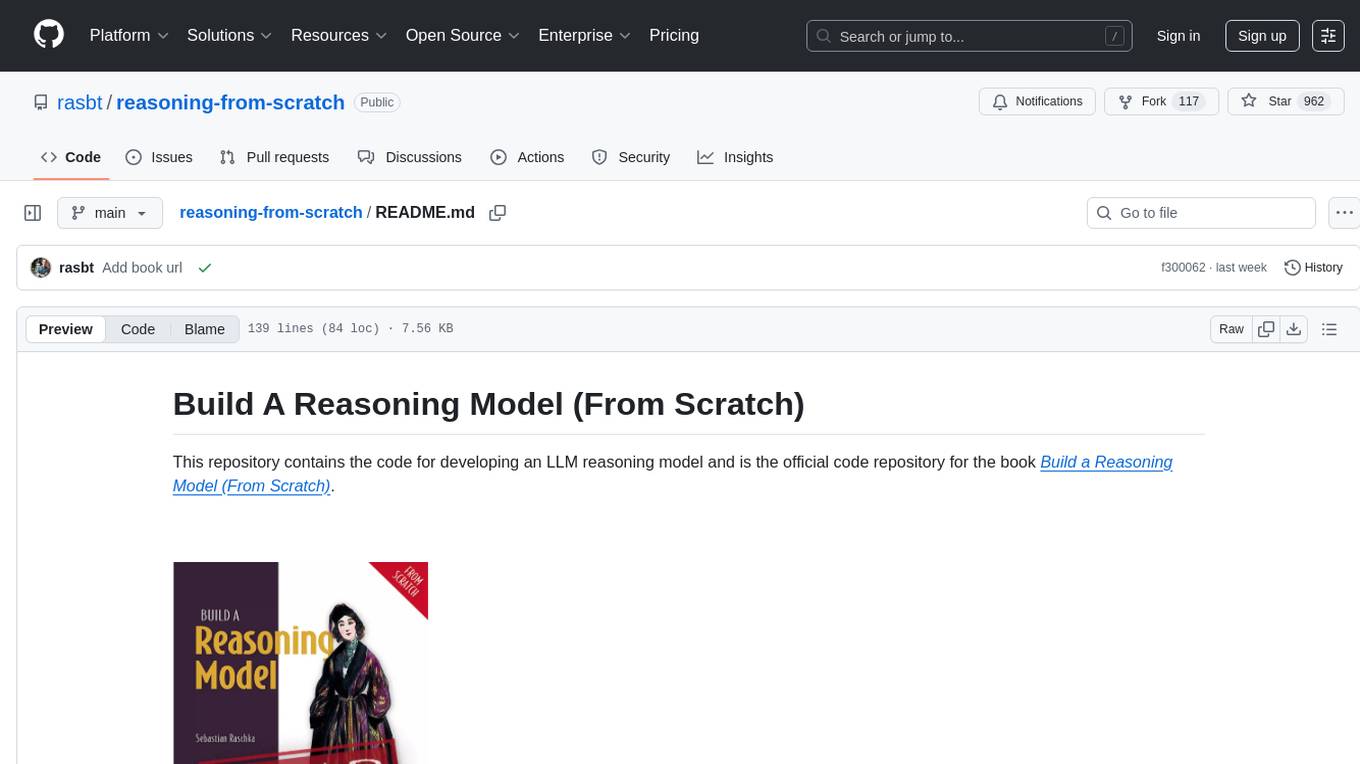
reasoning-from-scratch
This repository contains the code for developing a large language model (LLM) reasoning model. The book 'Build a Reasoning Model (From Scratch)' provides a hands-on approach to understanding and implementing reasoning capabilities in LLMs. It guides users through creating a small but functional reasoning model, mirroring approaches used in large-scale models like DeepSeek R1 and GPT-5 Thinking. The code includes methods for loading weights of pretrained models.
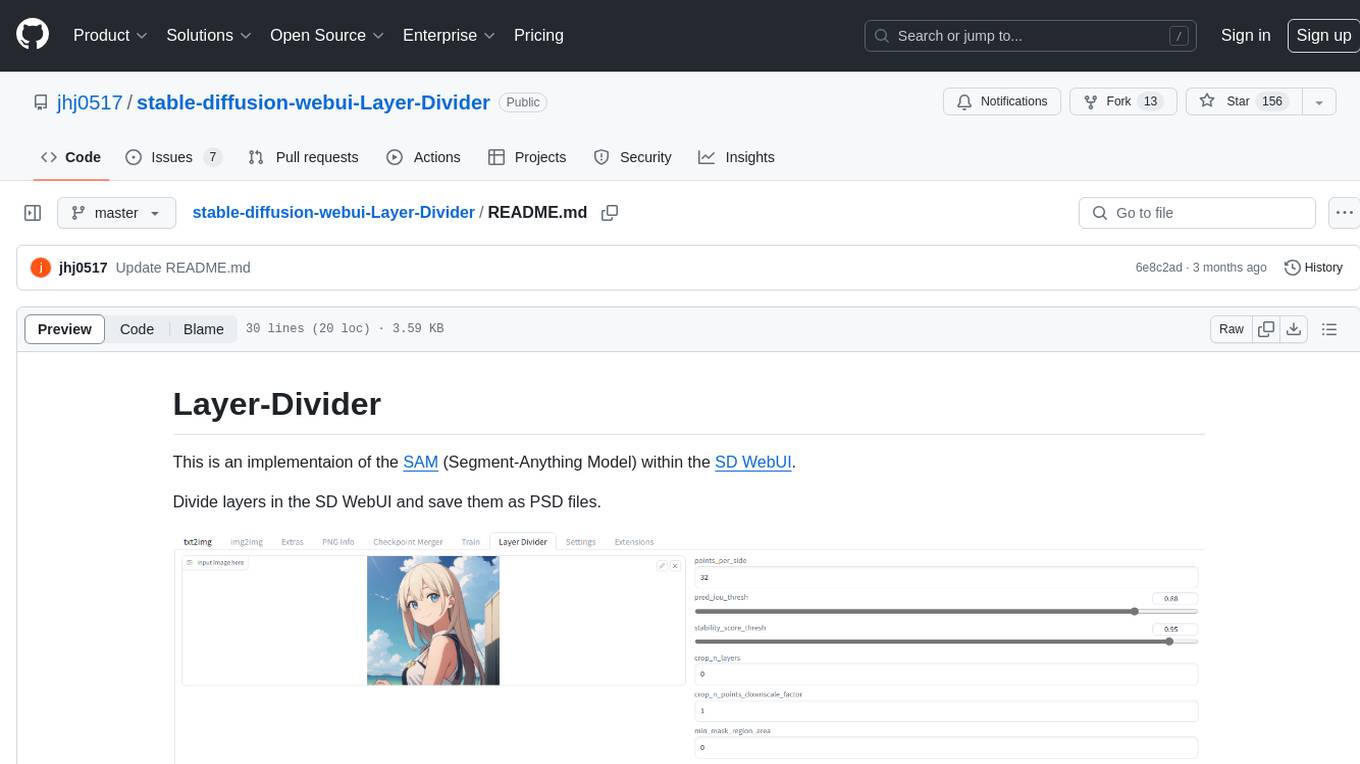
stable-diffusion-webui-Layer-Divider
This repository contains an implementation of the Segment-Anything Model (SAM) within the SD WebUI. It allows users to divide layers in the SD WebUI and save them as PSD files. Users can adjust parameters, click 'Generate', and view the output below. A PSD file will be saved in the designated folder. The tool provides various parameters for customization, such as points_per_side, pred_iou_thresh, stability_score_thresh, crops_n_layers, crop_n_points_downscale_factor, and min_mask_region_area.
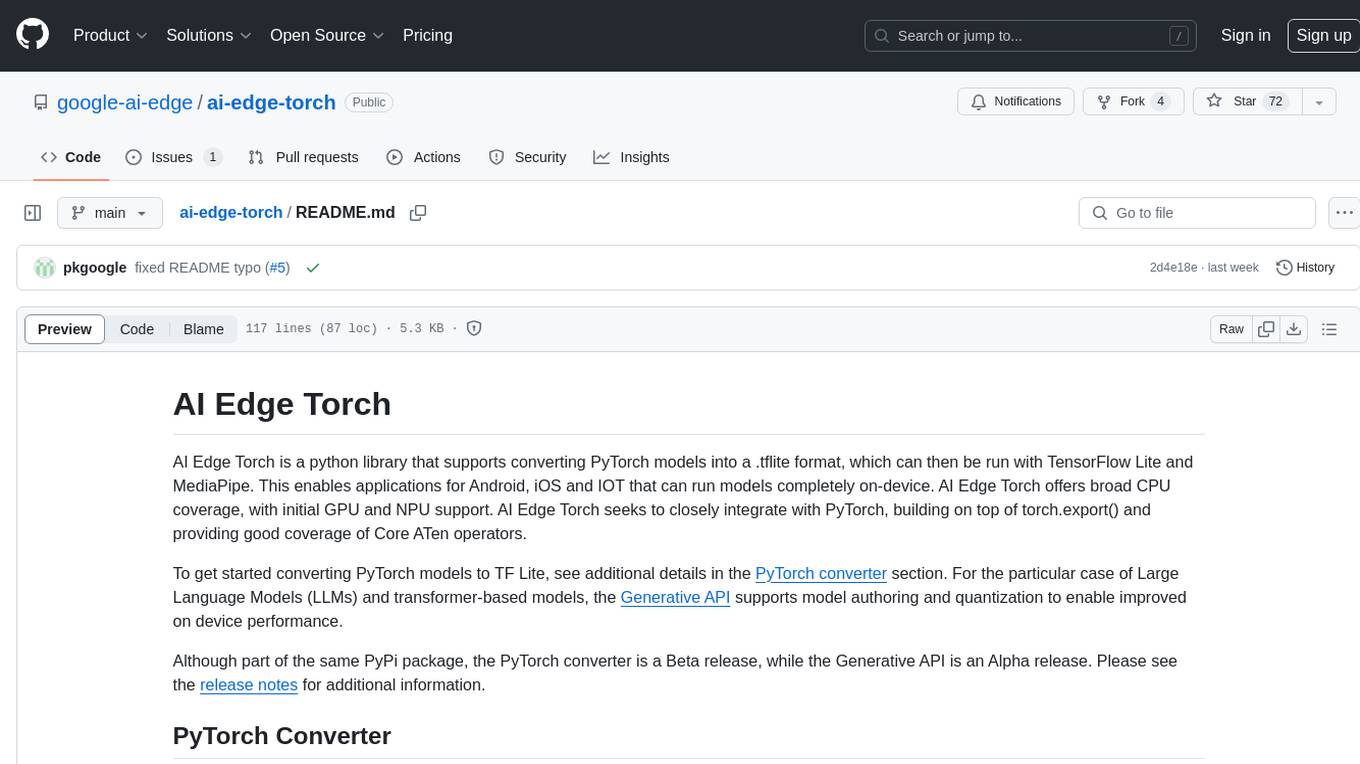
ai-edge-torch
AI Edge Torch is a Python library that supports converting PyTorch models into a .tflite format for on-device applications on Android, iOS, and IoT devices. It offers broad CPU coverage with initial GPU and NPU support, closely integrating with PyTorch and providing good coverage of Core ATen operators. The library includes a PyTorch converter for model conversion and a Generative API for authoring mobile-optimized PyTorch Transformer models, enabling easy deployment of Large Language Models (LLMs) on mobile devices.
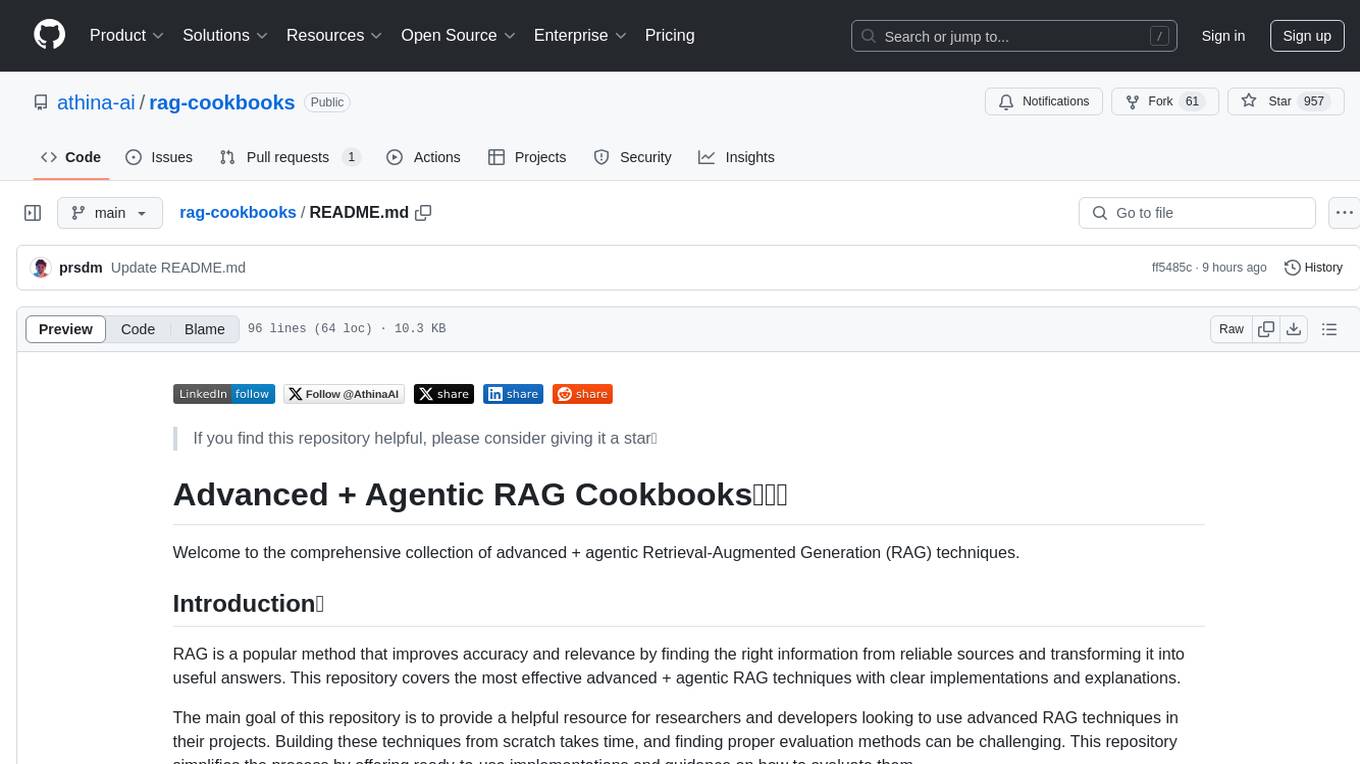
rag-cookbooks
Welcome to the comprehensive collection of advanced + agentic Retrieval-Augmented Generation (RAG) techniques. This repository covers the most effective advanced + agentic RAG techniques with clear implementations and explanations. It aims to provide a helpful resource for researchers and developers looking to use advanced RAG techniques in their projects, offering ready-to-use implementations and guidance on evaluation methods. The RAG framework addresses limitations of Large Language Models by using external documents for in-context learning, ensuring contextually relevant and accurate responses. The repository includes detailed descriptions of various RAG techniques, tools used, and implementation guidance for each technique.
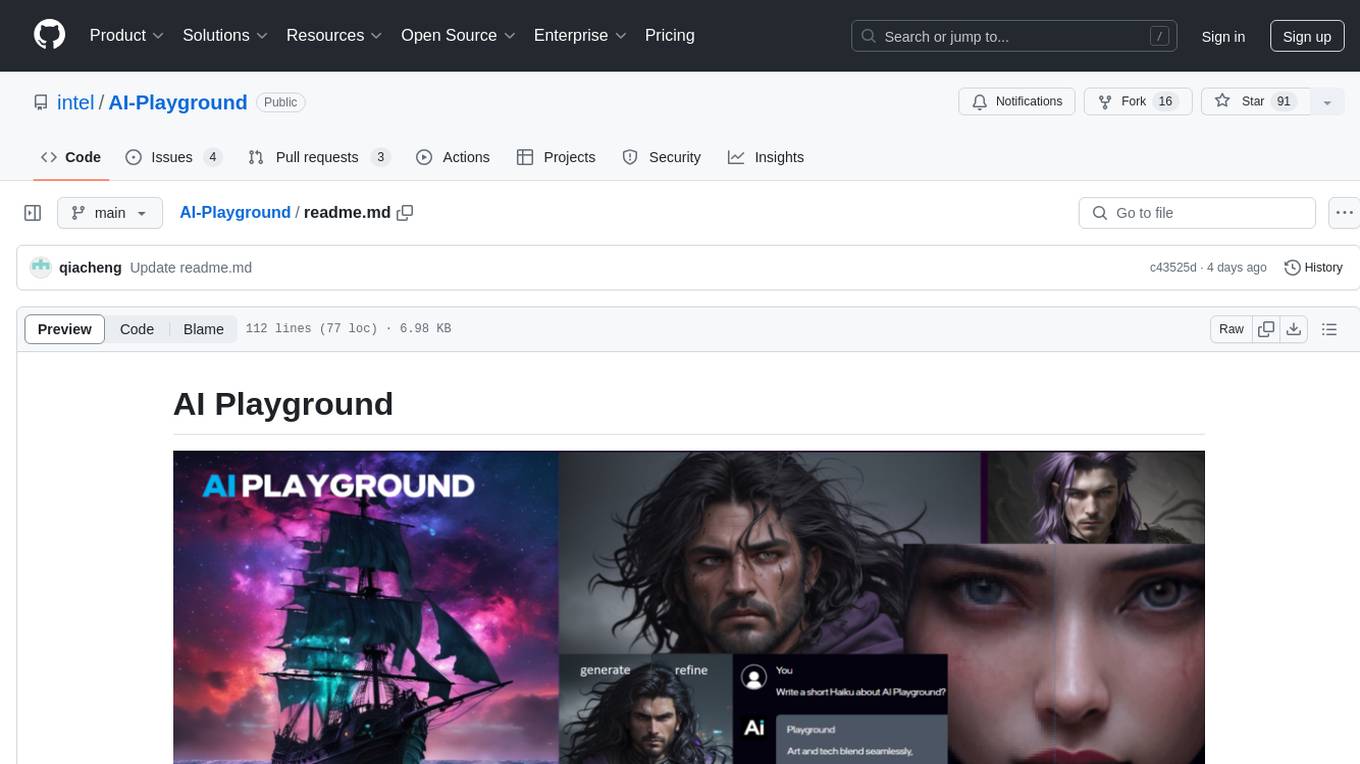
AI-Playground
AI Playground is an open-source project and AI PC starter app designed for AI image creation, image stylizing, and chatbot functionalities on a PC powered by an Intel Arc GPU. It leverages libraries from GitHub and Huggingface, providing users with the ability to create AI-generated content and interact with chatbots. The tool requires specific hardware specifications and offers packaged installers for ease of setup. Users can also develop the project environment, link it to the development environment, and utilize alternative models for different AI tasks.
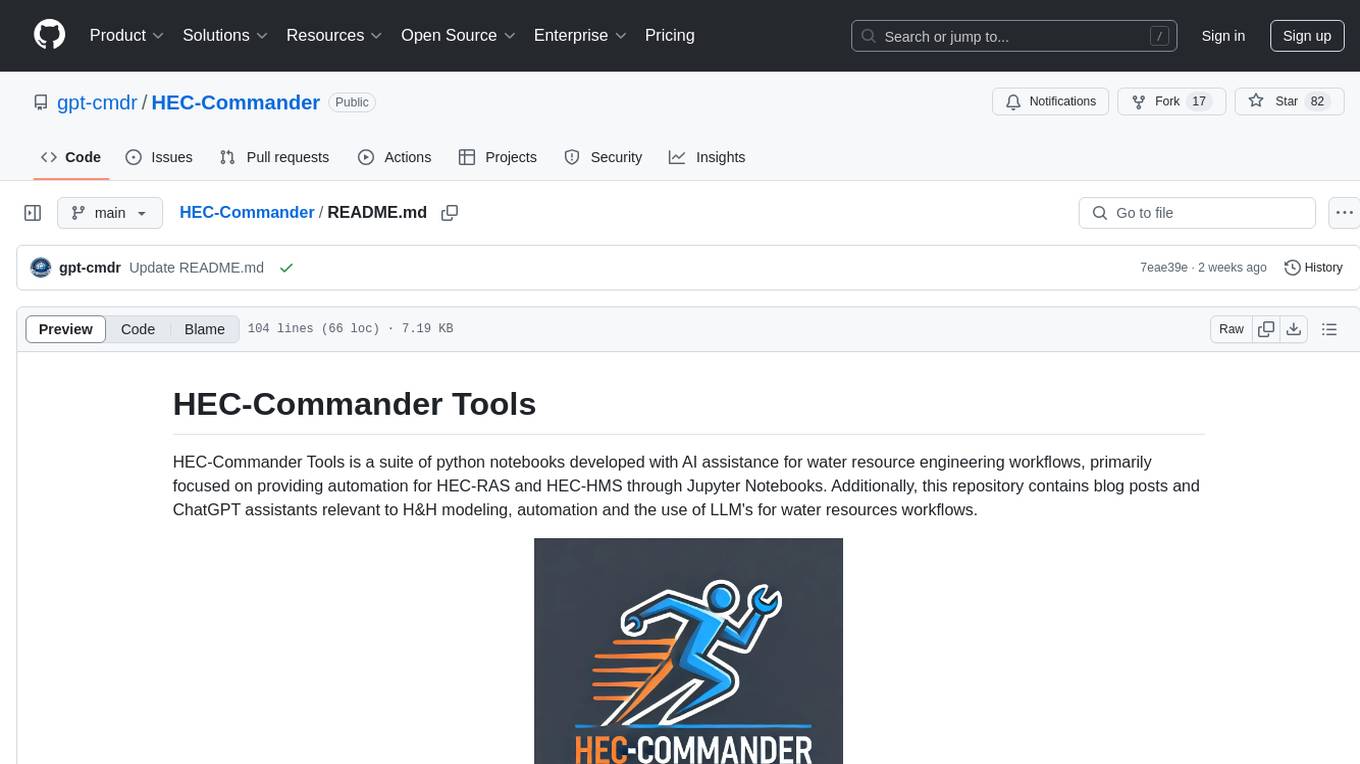
HEC-Commander
HEC-Commander Tools is a suite of python notebooks developed with AI assistance for water resource engineering workflows, focused on providing automation for HEC-RAS and HEC-HMS through Jupyter Notebooks. It contains automation scripts for HEC-HMS and HEC-RAS, tools for plotting results, and miscellaneous scripts for workflow assistance. The repository also includes blog posts, ChatGPT assistants, and presentations related to H&H modeling and the use of LLM's for water resources workflows.
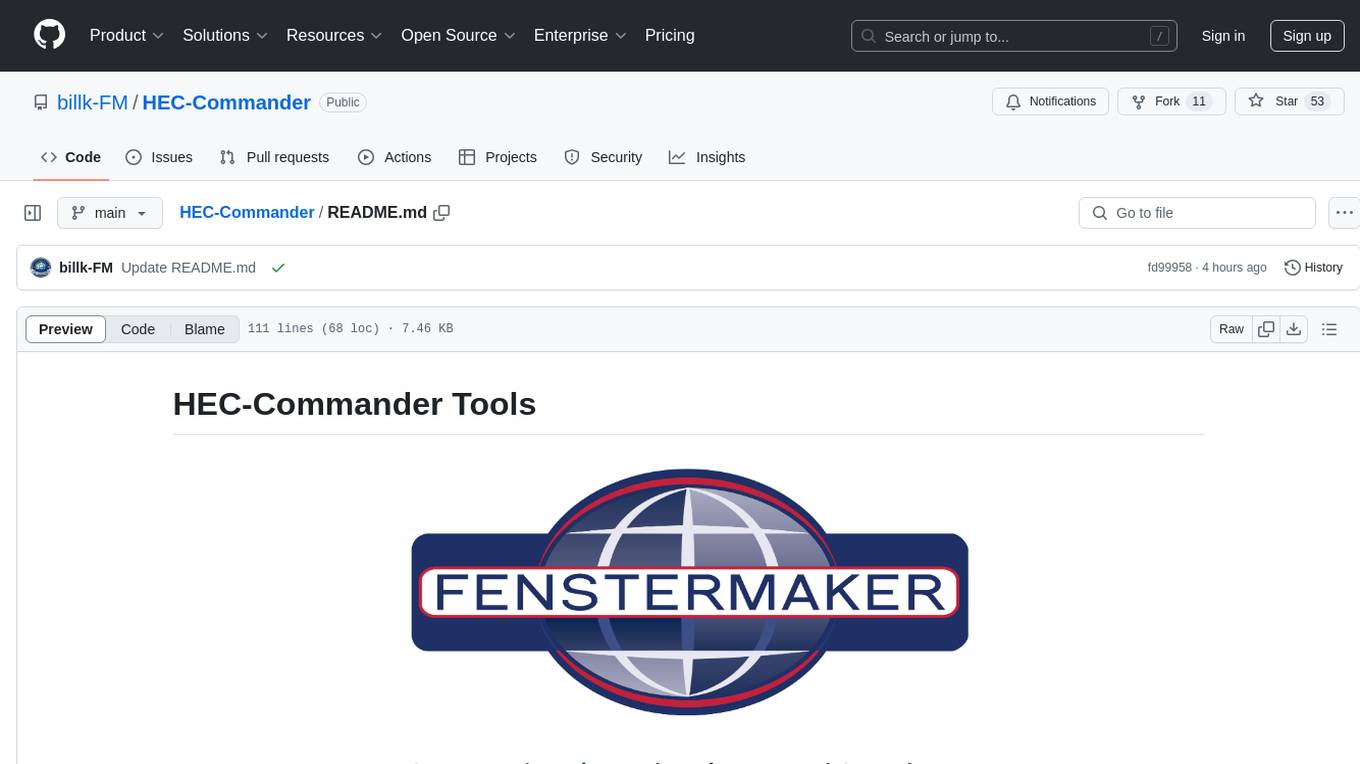
HEC-Commander
HEC-Commander Tools is a suite of python notebooks developed with AI assistance for water resource engineering workflows, providing automation for HEC-RAS and HEC-HMS through Jupyter Notebooks. It contains automation scripts for HEC-HMS, HEC-RAS, and DSS, along with miscellaneous tools. The repository also includes blog posts, ChatGPT assistants, and presentations related to H&H modeling and water resources workflows. Developed to support Region 4 of the Louisiana Watershed Initiative by Fenstermaker.
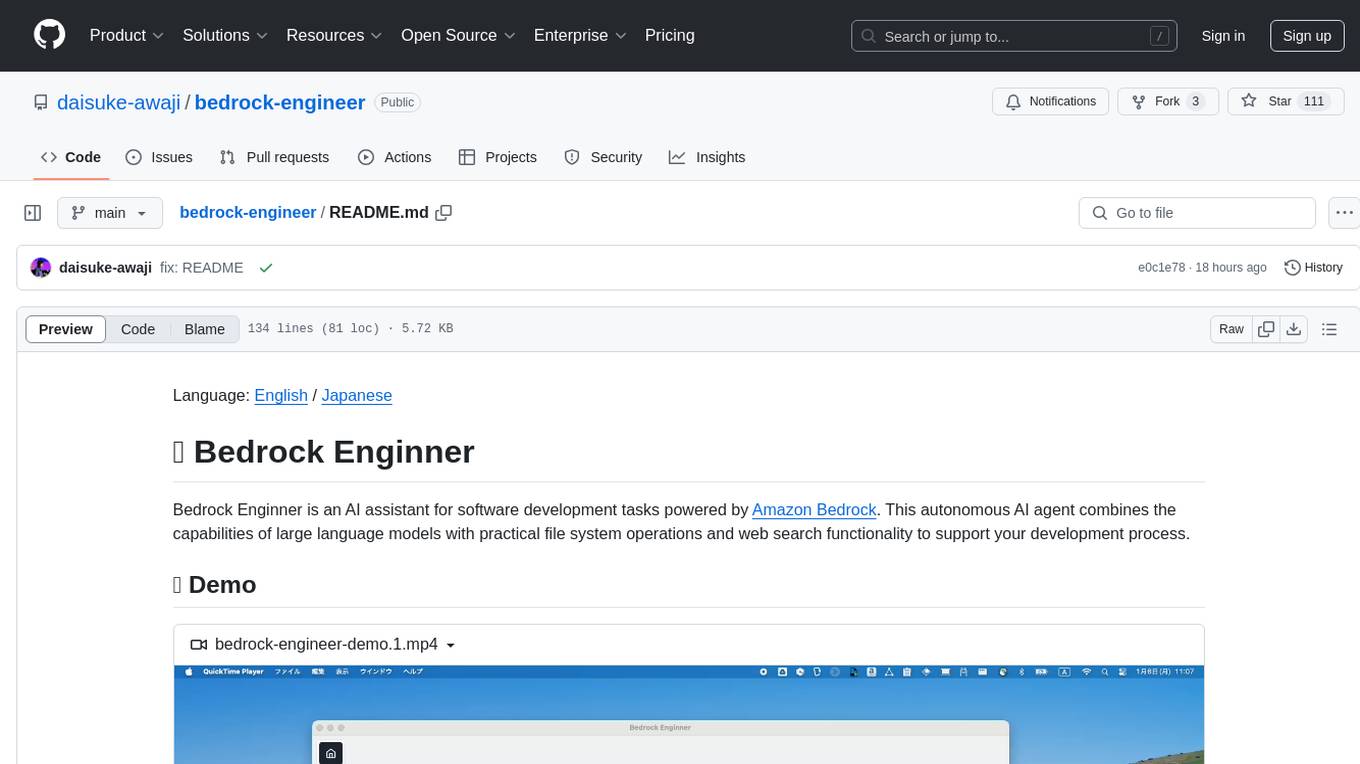
bedrock-engineer
Bedrock Engineer is an AI assistant for software development tasks powered by Amazon Bedrock. It combines large language models with file system operations and web search functionality to support development processes. The autonomous AI agent provides interactive chat, file system operations, web search, project structure management, code analysis, code generation, data analysis, agent and tool customization, chat history management, and multi-language support. Users can select agents, customize them, select tools, and customize tools. The tool also includes a website generator for React.js, Vue.js, Svelte.js, and Vanilla.js, with support for inline styling, Tailwind.css, and Material UI. Users can connect to design system data sources and generate AWS Step Functions ASL definitions.
For similar tasks

LLMStack
LLMStack is a no-code platform for building generative AI agents, workflows, and chatbots. It allows users to connect their own data, internal tools, and GPT-powered models without any coding experience. LLMStack can be deployed to the cloud or on-premise and can be accessed via HTTP API or triggered from Slack or Discord.

ai-guide
This guide is dedicated to Large Language Models (LLMs) that you can run on your home computer. It assumes your PC is a lower-end, non-gaming setup.

onnxruntime-genai
ONNX Runtime Generative AI is a library that provides the generative AI loop for ONNX models, including inference with ONNX Runtime, logits processing, search and sampling, and KV cache management. Users can call a high level `generate()` method, or run each iteration of the model in a loop. It supports greedy/beam search and TopP, TopK sampling to generate token sequences, has built in logits processing like repetition penalties, and allows for easy custom scoring.
jupyter-ai
Jupyter AI connects generative AI with Jupyter notebooks. It provides a user-friendly and powerful way to explore generative AI models in notebooks and improve your productivity in JupyterLab and the Jupyter Notebook. Specifically, Jupyter AI offers: * An `%%ai` magic that turns the Jupyter notebook into a reproducible generative AI playground. This works anywhere the IPython kernel runs (JupyterLab, Jupyter Notebook, Google Colab, Kaggle, VSCode, etc.). * A native chat UI in JupyterLab that enables you to work with generative AI as a conversational assistant. * Support for a wide range of generative model providers, including AI21, Anthropic, AWS, Cohere, Gemini, Hugging Face, NVIDIA, and OpenAI. * Local model support through GPT4All, enabling use of generative AI models on consumer grade machines with ease and privacy.
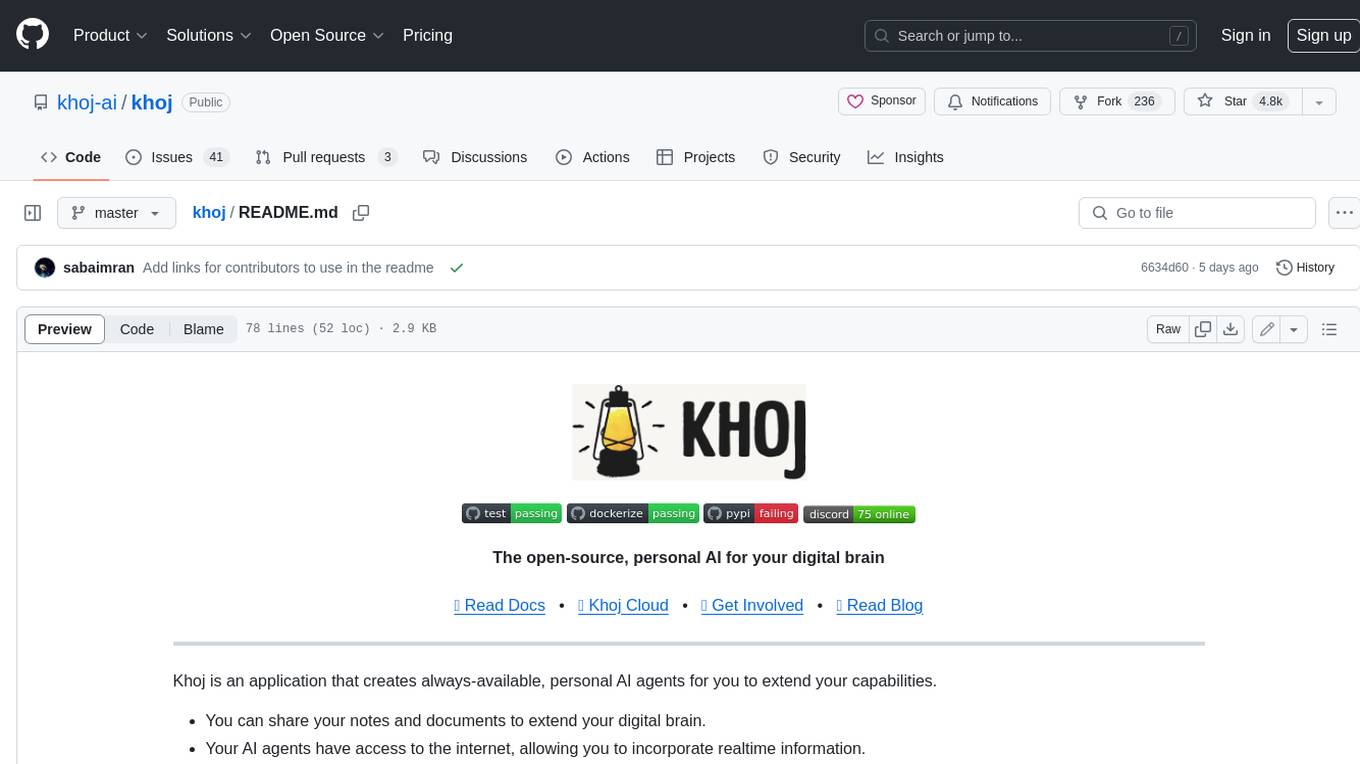
khoj
Khoj is an open-source, personal AI assistant that extends your capabilities by creating always-available AI agents. You can share your notes and documents to extend your digital brain, and your AI agents have access to the internet, allowing you to incorporate real-time information. Khoj is accessible on Desktop, Emacs, Obsidian, Web, and Whatsapp, and you can share PDF, markdown, org-mode, notion files, and GitHub repositories. You'll get fast, accurate semantic search on top of your docs, and your agents can create deeply personal images and understand your speech. Khoj is self-hostable and always will be.

langchain_dart
LangChain.dart is a Dart port of the popular LangChain Python framework created by Harrison Chase. LangChain provides a set of ready-to-use components for working with language models and a standard interface for chaining them together to formulate more advanced use cases (e.g. chatbots, Q&A with RAG, agents, summarization, extraction, etc.). The components can be grouped into a few core modules: * **Model I/O:** LangChain offers a unified API for interacting with various LLM providers (e.g. OpenAI, Google, Mistral, Ollama, etc.), allowing developers to switch between them with ease. Additionally, it provides tools for managing model inputs (prompt templates and example selectors) and parsing the resulting model outputs (output parsers). * **Retrieval:** assists in loading user data (via document loaders), transforming it (with text splitters), extracting its meaning (using embedding models), storing (in vector stores) and retrieving it (through retrievers) so that it can be used to ground the model's responses (i.e. Retrieval-Augmented Generation or RAG). * **Agents:** "bots" that leverage LLMs to make informed decisions about which available tools (such as web search, calculators, database lookup, etc.) to use to accomplish the designated task. The different components can be composed together using the LangChain Expression Language (LCEL).
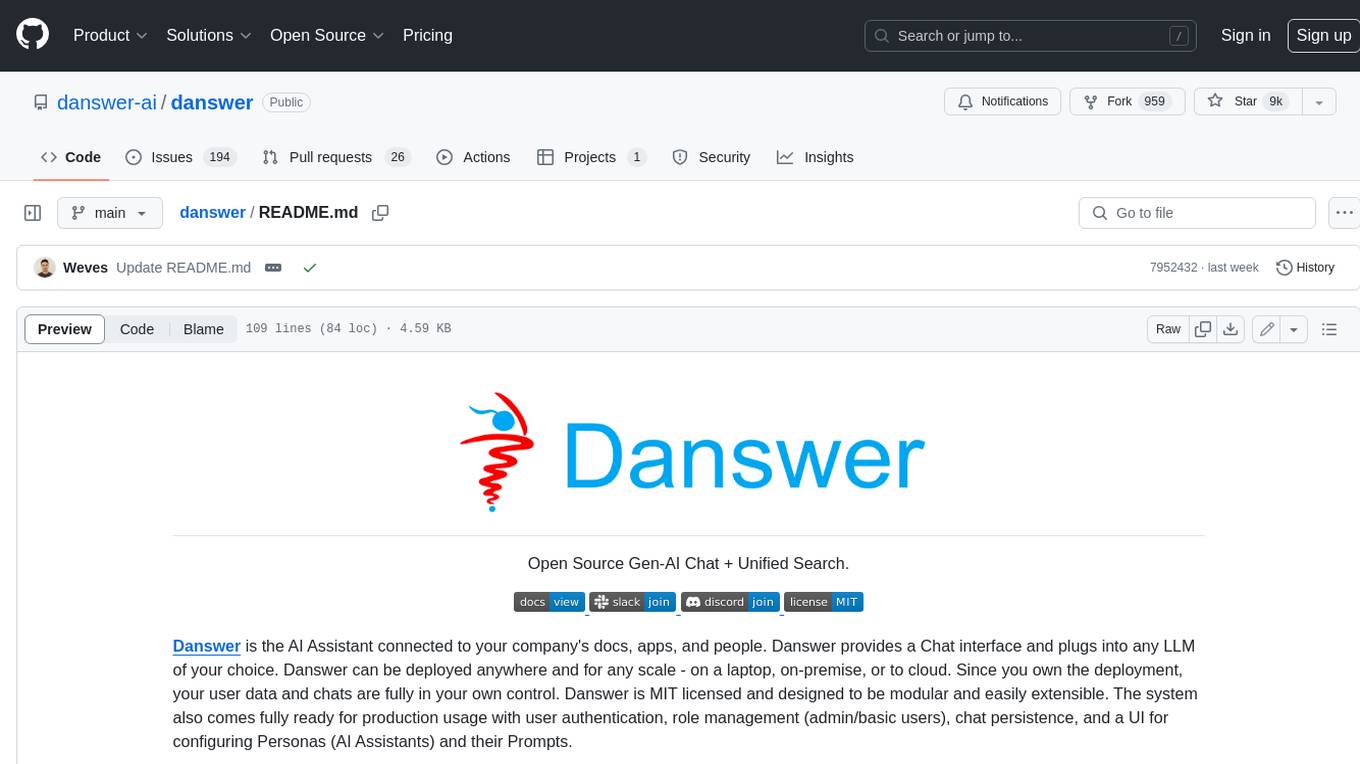
danswer
Danswer is an open-source Gen-AI Chat and Unified Search tool that connects to your company's docs, apps, and people. It provides a Chat interface and plugs into any LLM of your choice. Danswer can be deployed anywhere and for any scale - on a laptop, on-premise, or to cloud. Since you own the deployment, your user data and chats are fully in your own control. Danswer is MIT licensed and designed to be modular and easily extensible. The system also comes fully ready for production usage with user authentication, role management (admin/basic users), chat persistence, and a UI for configuring Personas (AI Assistants) and their Prompts. Danswer also serves as a Unified Search across all common workplace tools such as Slack, Google Drive, Confluence, etc. By combining LLMs and team specific knowledge, Danswer becomes a subject matter expert for the team. Imagine ChatGPT if it had access to your team's unique knowledge! It enables questions such as "A customer wants feature X, is this already supported?" or "Where's the pull request for feature Y?"
infinity
Infinity is an AI-native database designed for LLM applications, providing incredibly fast full-text and vector search capabilities. It supports a wide range of data types, including vectors, full-text, and structured data, and offers a fused search feature that combines multiple embeddings and full text. Infinity is easy to use, with an intuitive Python API and a single-binary architecture that simplifies deployment. It achieves high performance, with 0.1 milliseconds query latency on million-scale vector datasets and up to 15K QPS.
For similar jobs
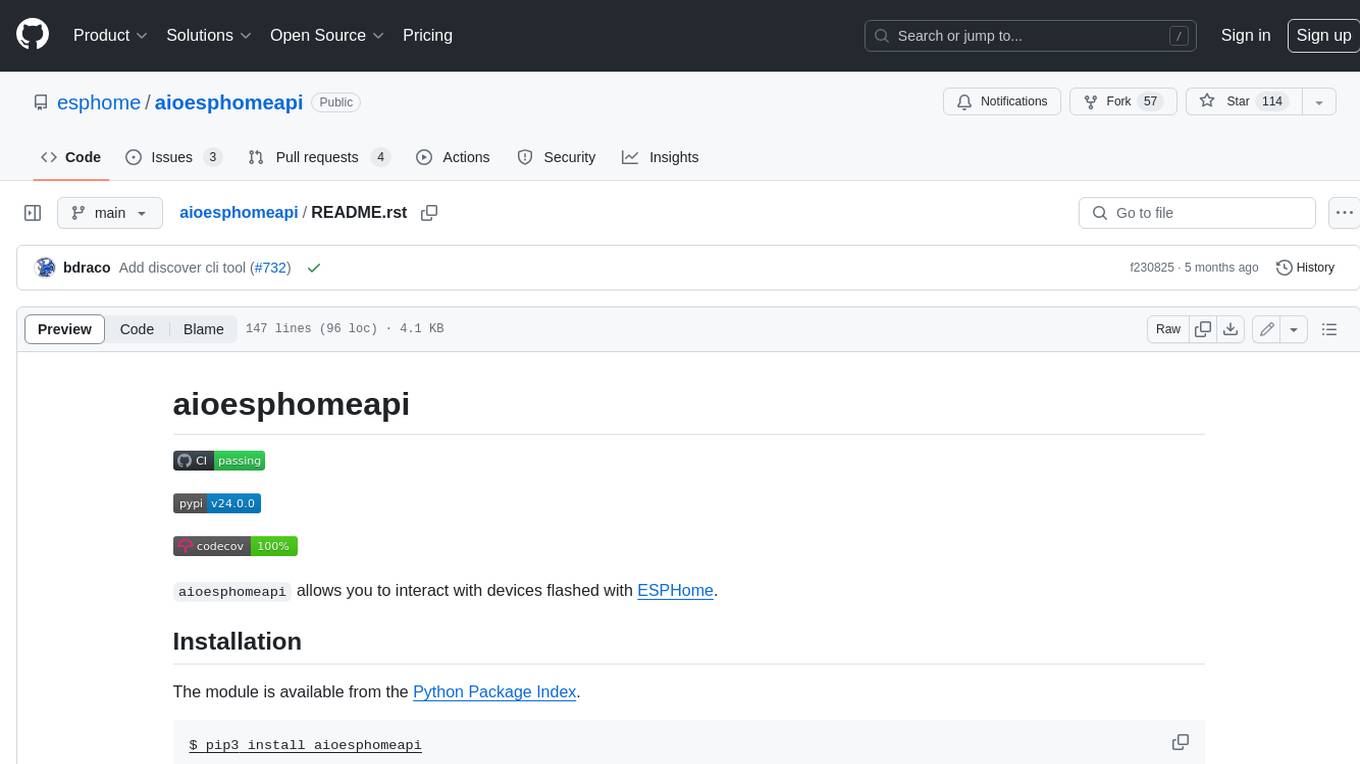
aioesphomeapi
aioesphomeapi allows you to interact with devices flashed with ESPHome. ESPHome is an open-source firmware that allows you to control your devices over Wi-Fi or Ethernet. With aioesphomeapi, you can connect to your ESPHome devices, retrieve their status, and control them from your Python code.

home-llm
Home LLM is a project that provides the necessary components to control your Home Assistant installation with a completely local Large Language Model acting as a personal assistant. The goal is to provide a drop-in solution to be used as a "conversation agent" component by Home Assistant. The 2 main pieces of this solution are Home LLM and Llama Conversation. Home LLM is a fine-tuning of the Phi model series from Microsoft and the StableLM model series from StabilityAI. The model is able to control devices in the user's house as well as perform basic question and answering. The fine-tuning dataset is a custom synthetic dataset designed to teach the model function calling based on the device information in the context. Llama Conversation is a custom component that exposes the locally running LLM as a "conversation agent" in Home Assistant. This component can be interacted with in a few ways: using a chat interface, integrating with Speech-to-Text and Text-to-Speech addons, or running the oobabooga/text-generation-webui project to provide access to the LLM via an API interface.

MITSUHA
OneReality is a virtual waifu/assistant that you can speak to through your mic and it'll speak back to you! It has many features such as: * You can speak to her with a mic * It can speak back to you * Has short-term memory and long-term memory * Can open apps * Smarter than you * Fluent in English, Japanese, Korean, and Chinese * Can control your smart home like Alexa if you set up Tuya (more info in Prerequisites) It is built with Python, Llama-cpp-python, Whisper, SpeechRecognition, PocketSphinx, VITS-fast-fine-tuning, VITS-simple-api, HyperDB, Sentence Transformers, and Tuya Cloud IoT.
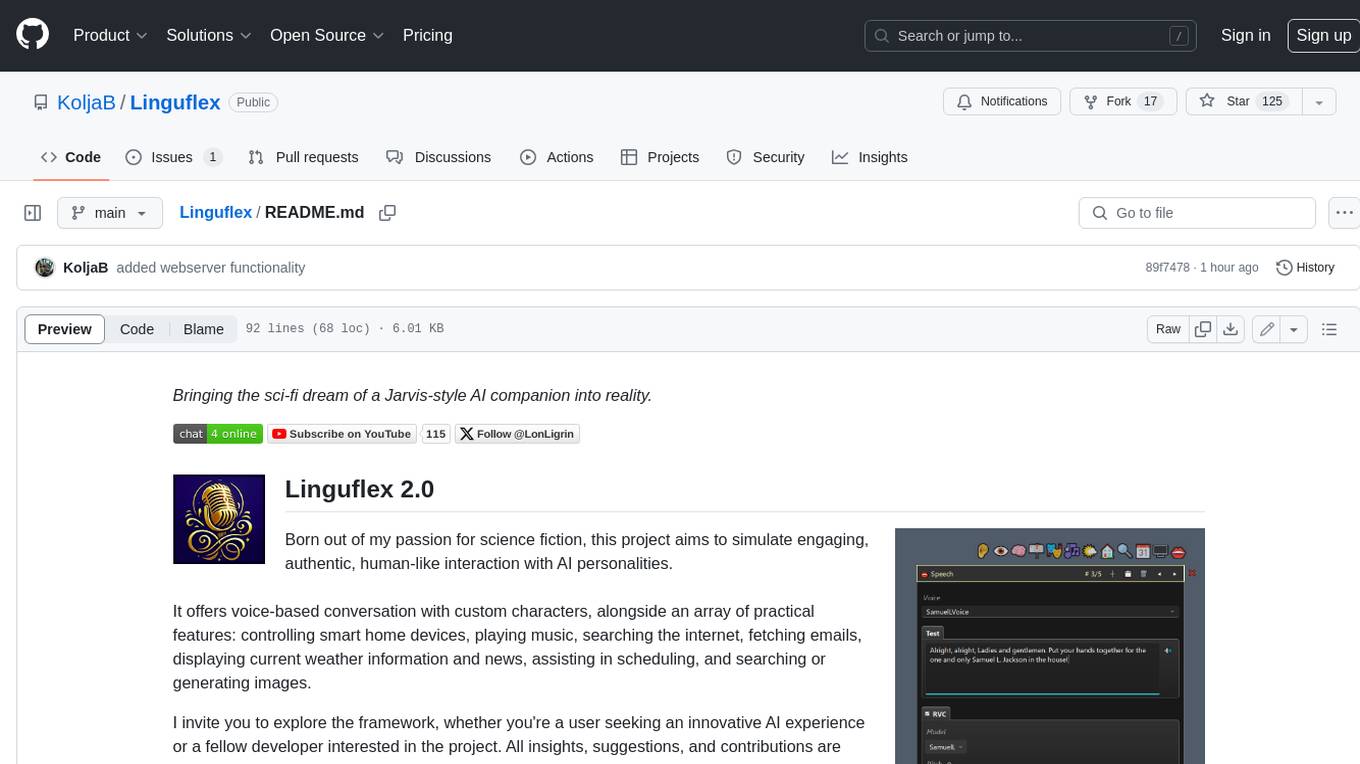
Linguflex
Linguflex is a project that aims to simulate engaging, authentic, human-like interaction with AI personalities. It offers voice-based conversation with custom characters, alongside an array of practical features such as controlling smart home devices, playing music, searching the internet, fetching emails, displaying current weather information and news, assisting in scheduling, and searching or generating images.
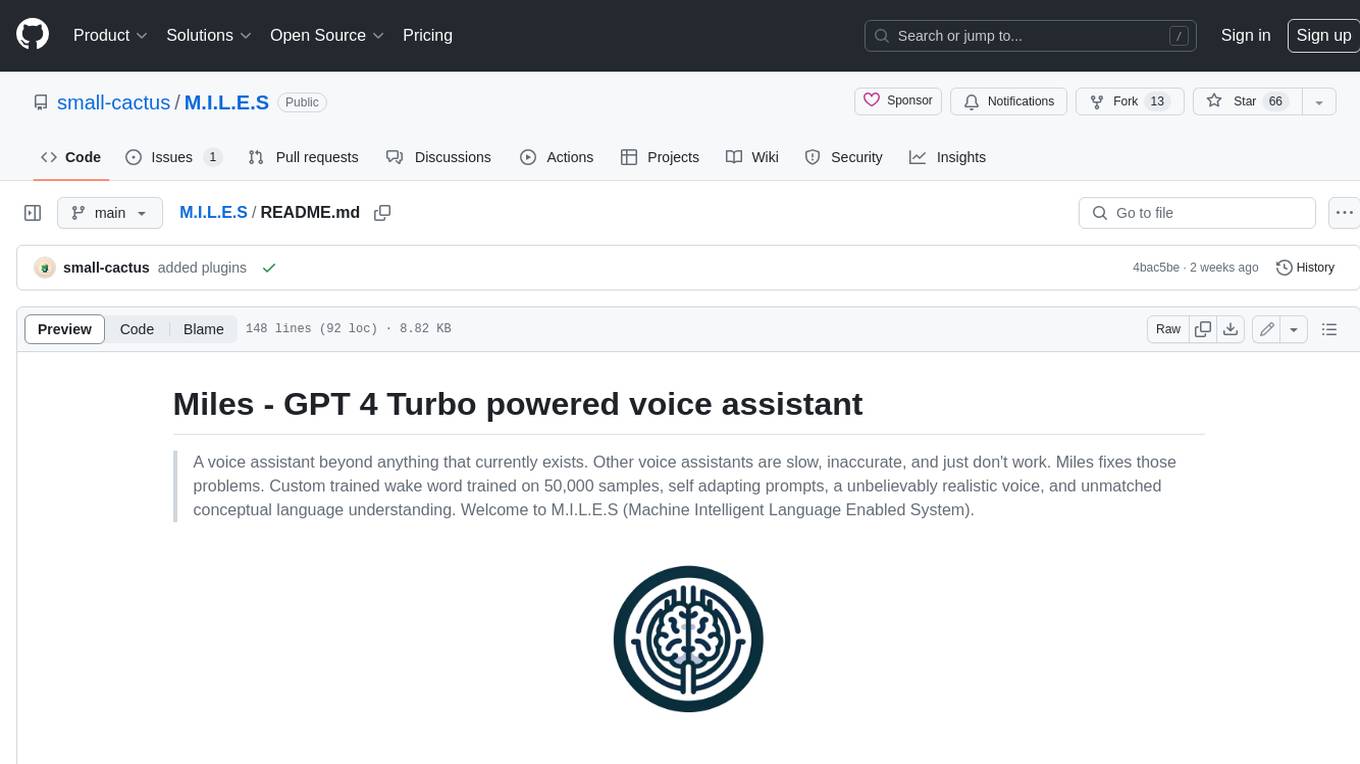
M.I.L.E.S
M.I.L.E.S. (Machine Intelligent Language Enabled System) is a voice assistant powered by GPT-4 Turbo, offering a range of capabilities beyond existing assistants. With its advanced language understanding, M.I.L.E.S. provides accurate and efficient responses to user queries. It seamlessly integrates with smart home devices, Spotify, and offers real-time weather information. Additionally, M.I.L.E.S. possesses persistent memory, a built-in calculator, and multi-tasking abilities. Its realistic voice, accurate wake word detection, and internet browsing capabilities enhance the user experience. M.I.L.E.S. prioritizes user privacy by processing data locally, encrypting sensitive information, and adhering to strict data retention policies.

leon
Leon is an open-source personal assistant who can live on your server. He does stuff when you ask him to. You can talk to him and he can talk to you. You can also text him and he can also text you. If you want to, Leon can communicate with you by being offline to protect your privacy.

llama-assistant
Llama Assistant is an AI-powered assistant that helps with daily tasks, such as voice recognition, natural language processing, summarizing text, rephrasing sentences, answering questions, and more. It runs offline on your local machine, ensuring privacy by not sending data to external servers. The project is a work in progress with regular feature additions.

pocketpal-ai
PocketPal AI is a versatile virtual assistant tool designed to streamline daily tasks and enhance productivity. It leverages artificial intelligence technology to provide personalized assistance in managing schedules, organizing information, setting reminders, and more. With its intuitive interface and smart features, PocketPal AI aims to simplify users' lives by automating routine activities and offering proactive suggestions for optimal time management and task prioritization.